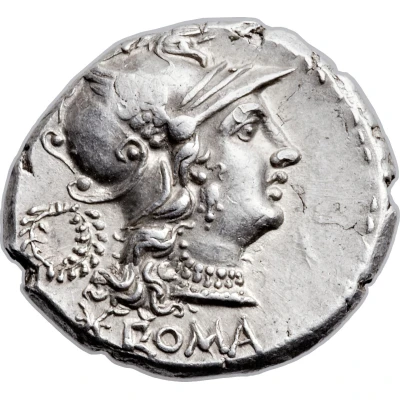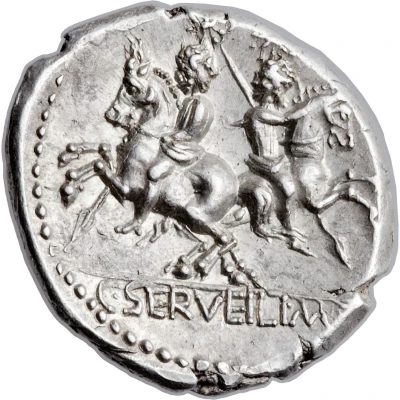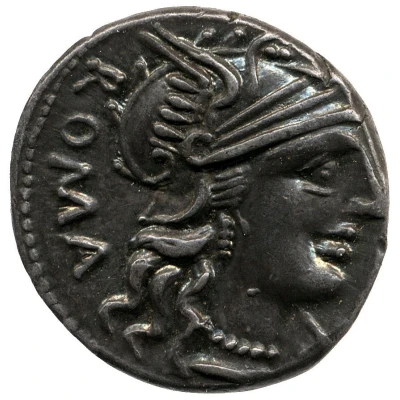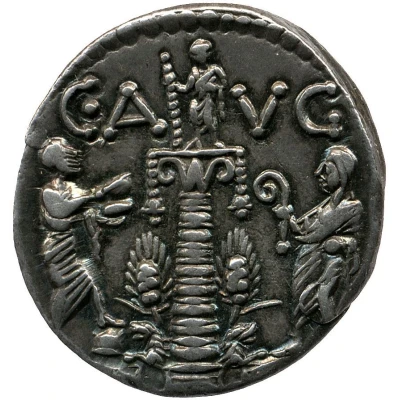
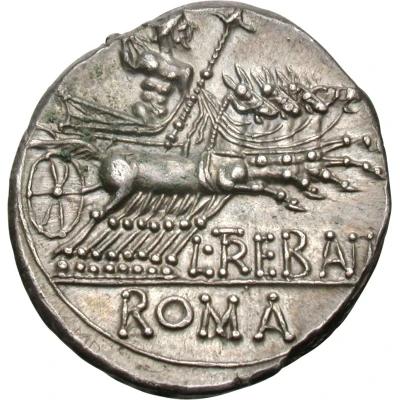

© Heritage Auctions
Denarius Trebania: Lucius Trebanius; L•TREBANI ROMA 135 BC
135 BC year| Silver | 3.98 g | 19 mm |
| Issuer | Rome › Roman Republic (509 BC - 27 BC) |
|---|---|
| Period | Republic (509 BC - 27 BC) |
| Type | Standard circulation coin |
| Year | 135 BC |
| Value | Denarius (1) |
| Currency | Denarius of 16 Asses (141 – 27 BC) |
| Composition | Silver |
| Weight | 3.98 g |
| Diameter | 19 mm |
| Shape | Round (irregular) |
| Technique | Hammered |
| Orientation | Variable alignment ↺ |
| Demonetized | Yes |
| Updated | 2024-10-06 |
| Numista | N#66956 |
|---|---|
| Rarity index | 93% |
Reverse
Jupiter in quadriga right, holding sceptre and reins in left hand and hurling thunderbolt with right hand.
Moneyer mark in field under horses, TR in monogram, AN ligatured.
ROMA in exergue.
Script: Latin
Lettering:
L•TREBANI
ROMA
Translation: Lucius Trebanius
Comment
The gens Trebania was a family of uncertain order and does not seem to be of huge importance under Roman Republic.Interesting fact
The Denarius coin was used as a standard currency in ancient Rome and was equivalent to 10 asses, which were the smallest units of currency at that time. It was made of silver and weighed around 3.98 grams, as . The coin featured an image of the Roman goddess Roma on one side and the letters "L•TREBANI ROMA" on the other, indicating that it was minted during the reign of Lucius Trebanius, who was a Roman consul in 135 BC. It's interesting to note that the Denarius coin was used for a long time, from the Roman Republic to the Roman Empire, and its design and value changed over time. It's a great example of how currency can reflect the political, social, and economic changes of a society throughout history.
